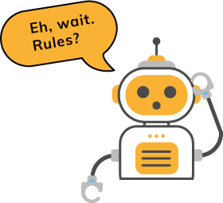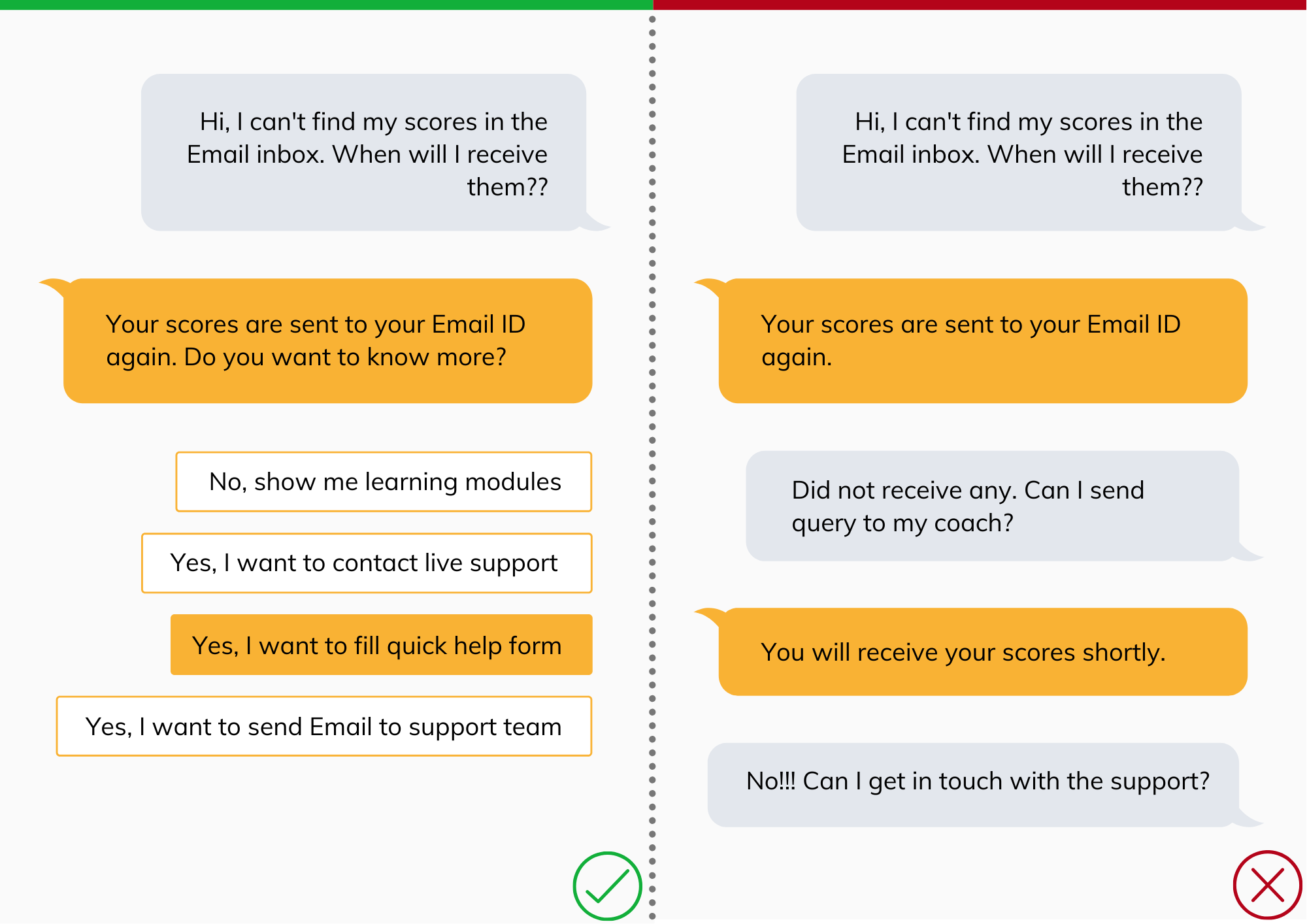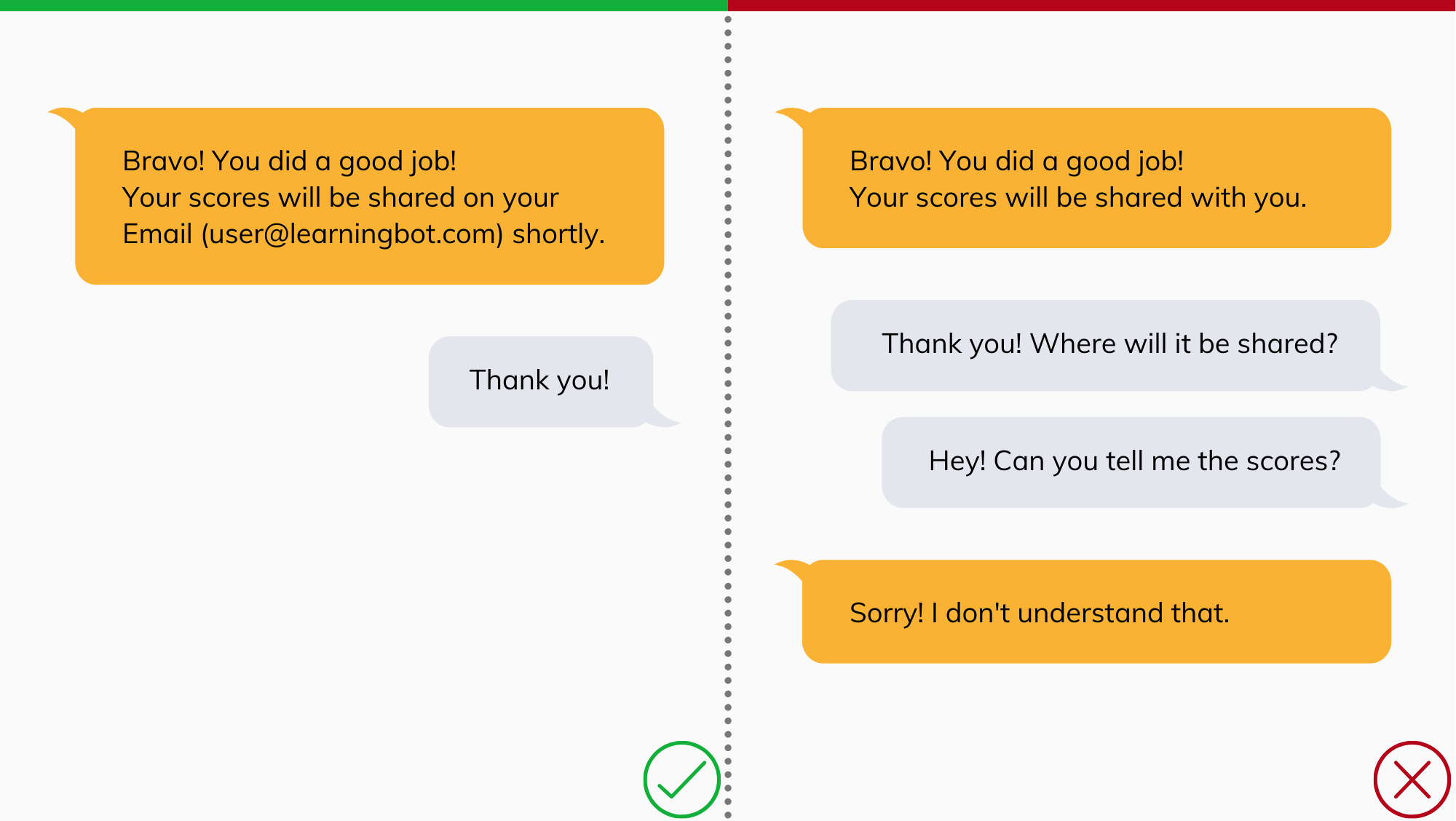With chatbots becoming a trend, and a competition at the same time, we often wonder how do we design a convincing one. Chatbot designing does not come with a blueprint. It is a well-thought result of your product idea and customer needs. In this article, we will look into few key rules for designing a chatbot.

Okay, not hard rules! But these are some of the important practices which can make your chatbot effective :)
One of the prime purposes of a chatbot is to offload customer interaction from humans and increase the productivity of the team. Thus, the design not only requires you to think your chatbot manners but also demands that the chatbot treats your earned customers just right (Lot like how you would treat them). Challenging, don’t you think? That’s why we have some rules listed here for you to craft an impressive chatbot.
Rule One: Make for all and for one
It's always important to make a customer feel connected with the chatbot. This is not achieved by just good bot language, it also requires the chatbot to cater to the needs of the customer right with minimum inputs and conversational turns. This makes the customer feels that the chatbot is tailor-made for all his needs.

This starts with keeping the chatbot focused and regular conversation pattern analysis. Hence, data is king! Collect the most common and frequently asked questions by the customers and train your chatbot with them. This ensures minimum fallbacks and quick gratification.
Rule Two: Never leave a customer confused
Be precise with the chatbot replies. Giving vague responses to the users will leave them confused and hanging.
Let's understand this more with conversation examples. Consider a scenario where a student is interacting with a learning chatbot after taking an in-built assessment.
The first conversation set certainly seems accurate and helpful. The user is served with precise and complete information without leaving a loose end like how and when the reports will be shared. Hence, never leaving a customer confused should be your constant motto for an effective chatbot.
Rule Three: Build an aid, not a maze
Another important factor that makes a chatbot effective is to offer multiple ways to take the conversation forward or to get out of one. You do it by giving users choices after bot replies. This not only guarantees a loop proof interaction but also helps the user to understand chatbot scope and capabilities.
Let's see this with our learning chatbot example. Suppose the scores report Email did not reach the student and he now wants to get the status.

What do we understand from the above conversation sets? Sometimes chatbot interaction can get frustrating for the user or does not turn out to be fruitful. In these cases, the user must always have other options to contact a human directly or to send further queries/concerns to your team. These ways can be provided to users using the choices shown in the first conversation above. It can be an option to get live support or to fill a help form or as simple as the support team's contact information.
Yay! No more annoying bot mazes!
Lastly, a quick bonus tip for all the designers is to add some fun ingredients to the chatbot. Elements like emojis, good humour, media messages, and pleasant interfaces have proven to be significant factors in increasing customer engagement.
Watch out for our next article on few important visual design principles to build impactful chatbot interfaces.


.png?width=551&name=startups%20(2).png)